It’s not easy to tell corvids apart.
You’re unlikely to mistake an American Crow (Corvus brachyrhynchos) for a Blue Jay (Cyanocitta cristata)—Cyanocitta is in the Corvidae family—but when you think “corvid” you probably think of crows and ravens.
There are ways to tell one from the other.1
Common Raven (Corvus corax) vs. American Crow (Corvus brachyrhynchos).
Ravens and crows are tough.2 Ravens are bigger, more like Red-tailed Hawks in size. They have wingspans of about four feet. An American Crow’s is more like three.
The Common Raven’s bill is heavier and more curved. At close range, other details are apparent—longer bristling at the bill’s base, a shaggy throat.
If you’ve seen an American Crow in a treetop, then see a similar but larger corvid in the same spot, maybe it’s a Raven. More often, you’ll probably see these birds on the wing. No reference point, just an expanse of sky.
Without a reference point, start at the tail. American Crows have “a short tail that is squared off at the end,” Mass Audubon explains.
A Common Raven’s is “longer, wedge-shaped.” Their tails have longer middle feathers.
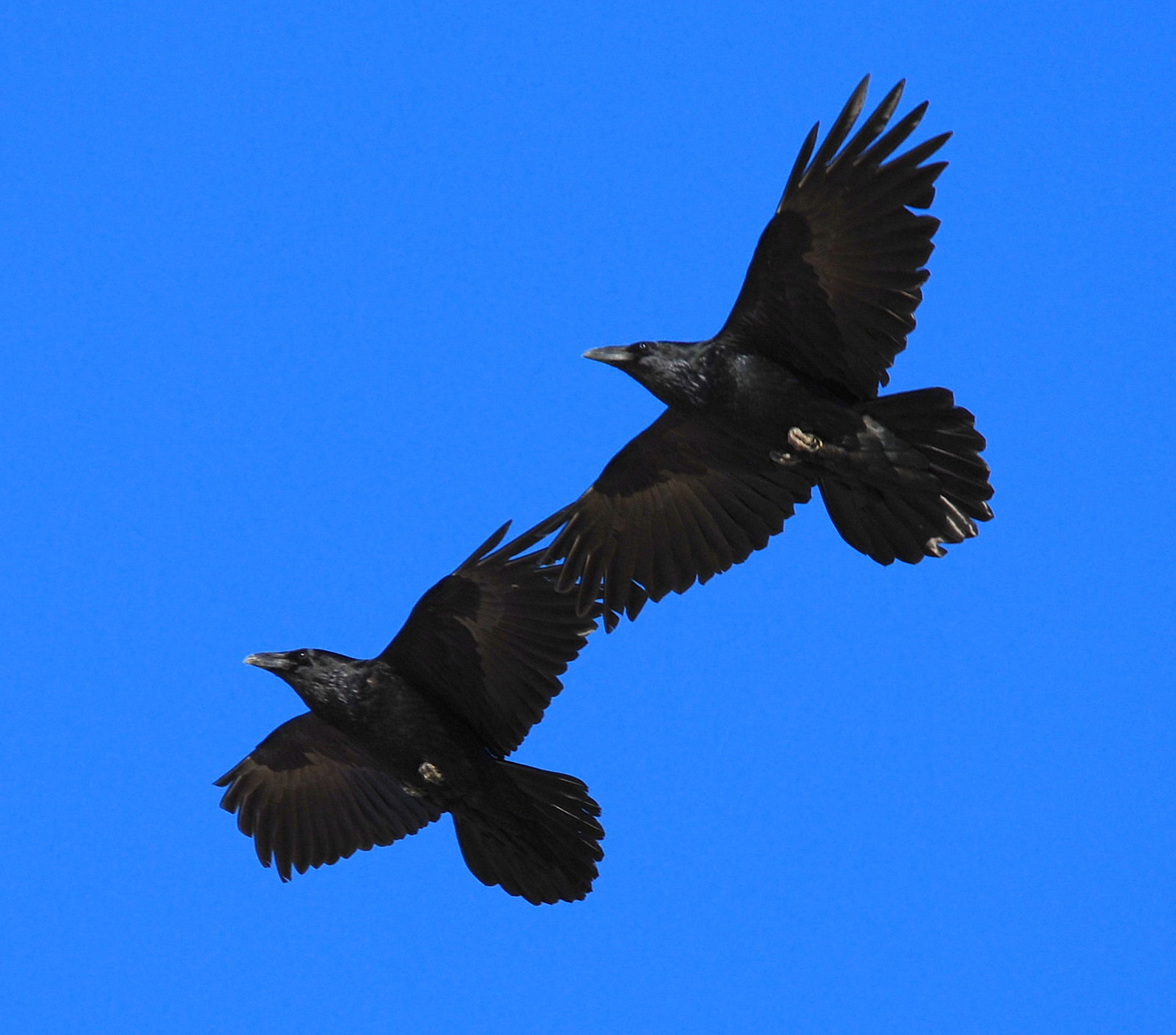
There are also differences in flight pattern. Ravens soar and tumble; crows flap. A raven’s long wings appear slightly pointed, while an American Crow’s “are fairly broad and rounded with the wingtip feathers spread like fingers.” In addition, NatureMapping points out: “A raven's wing sometimes makes a prominent ‘swish, swish’ sound, while a crow's wingbeat is usually silent.”
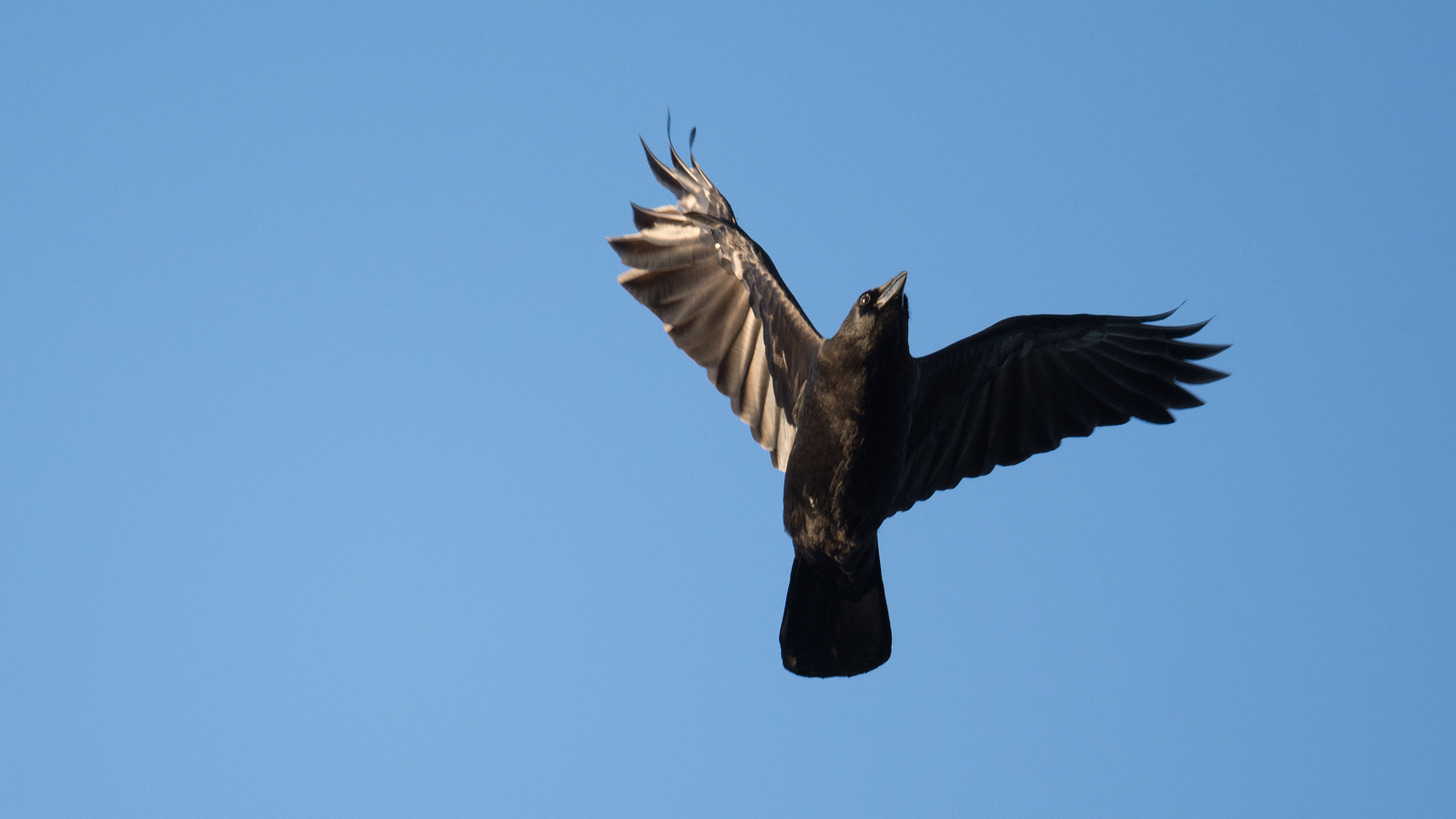
Birding by ear?
Ravens croak. Their calls are deep and “scratchy, burbling.”
American Crows sound like you’d imagine: caw.
Range can also help. Common Ravens are less common than American Crows in the east, but Audubon says ravens are expanding their range, “especially in the northeast” (emphasis mine). They’re also moving south “into formerly occupied areas.”
Fish Crow or American Crow?
Nearly impossible to differentiate by sight, I rely on my ear for these. A Fish Crow’s call is nasally and quick, an American has the classic “caw.” There are ways, with practice, to tell them apart by sight. The Fish Crow is smaller, with more pointed wings than American.
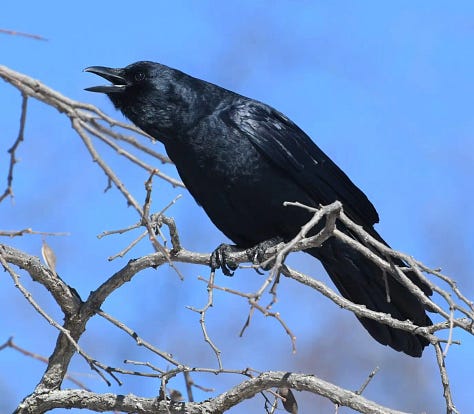
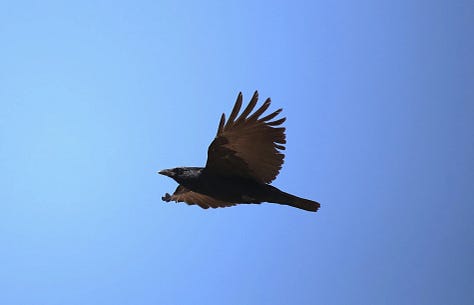
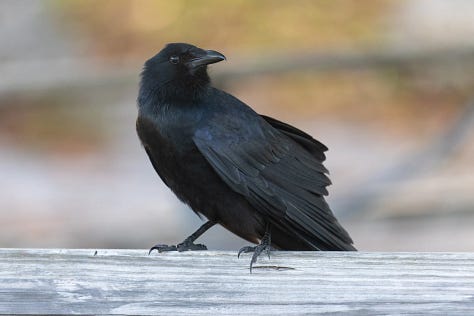
I don’t think I’ll ever be able to tell Fish from American Crows without hearing them, but iNaturalist says:
The conventional wisdom…is that Fish Crow and American Crow:
• Are identical
• Are indistinguishable in the field
• Are virtually indistinguishable in the field
• Can only be reliably distinguished by callThese are all incorrect.
Things to look for include the Fish Crow’s “glossy blackish violet that can look like a hoodie,” and the American’s “distinctive scalloped pattern on its glossy back that contrasts sharply with a flat black nape.” Fish Crow is bluish, American is more plainly black.


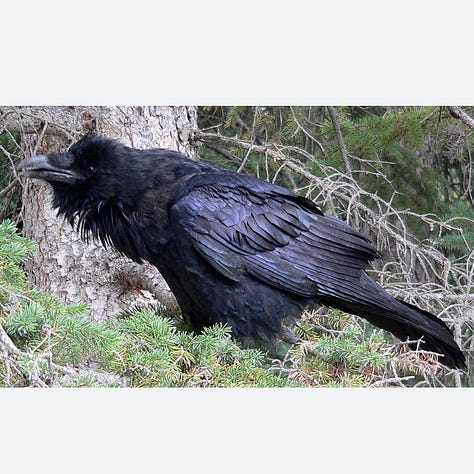
Telling crows from ravens—or crows from crows—isn’t as objectively exciting as telling female Bay-breasted (Setophaga castanea) from female Blackburnian Warblers (Setophaga fusca), but learning how to is well worth your time.
This post came at the request of
, of . If there’s a species or a topic you’d like covered, let me know. I might not get to it immediately—I’ve been chipping away at one I was asked to write about the River of Doubt months ago—but I’ll try to be as quick as I can.When I say “raven” here I only mean Common Raven. There’s also the Chihuahuan Raven (Corvus cryptoleucus) in the southwest, but I’m just writing about Corvus corax.





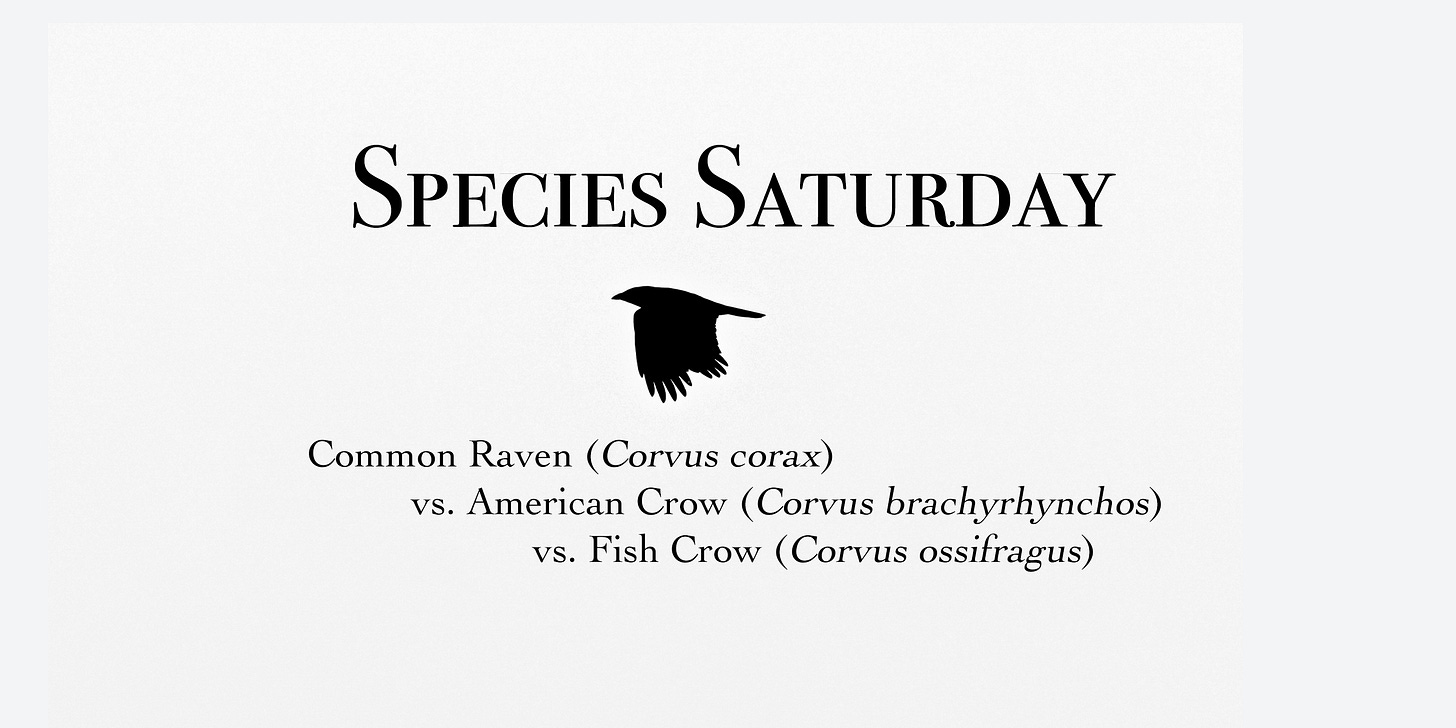
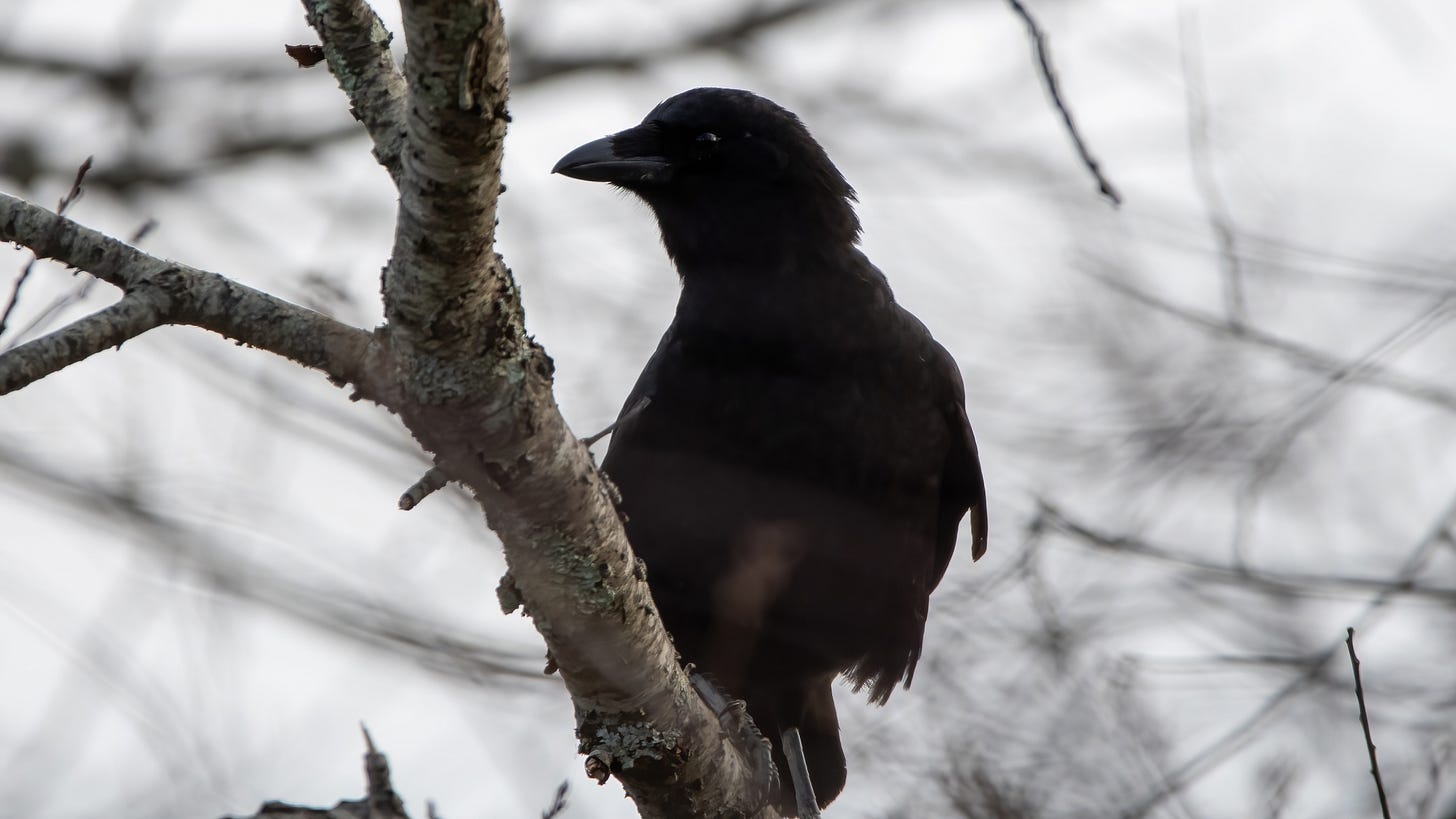
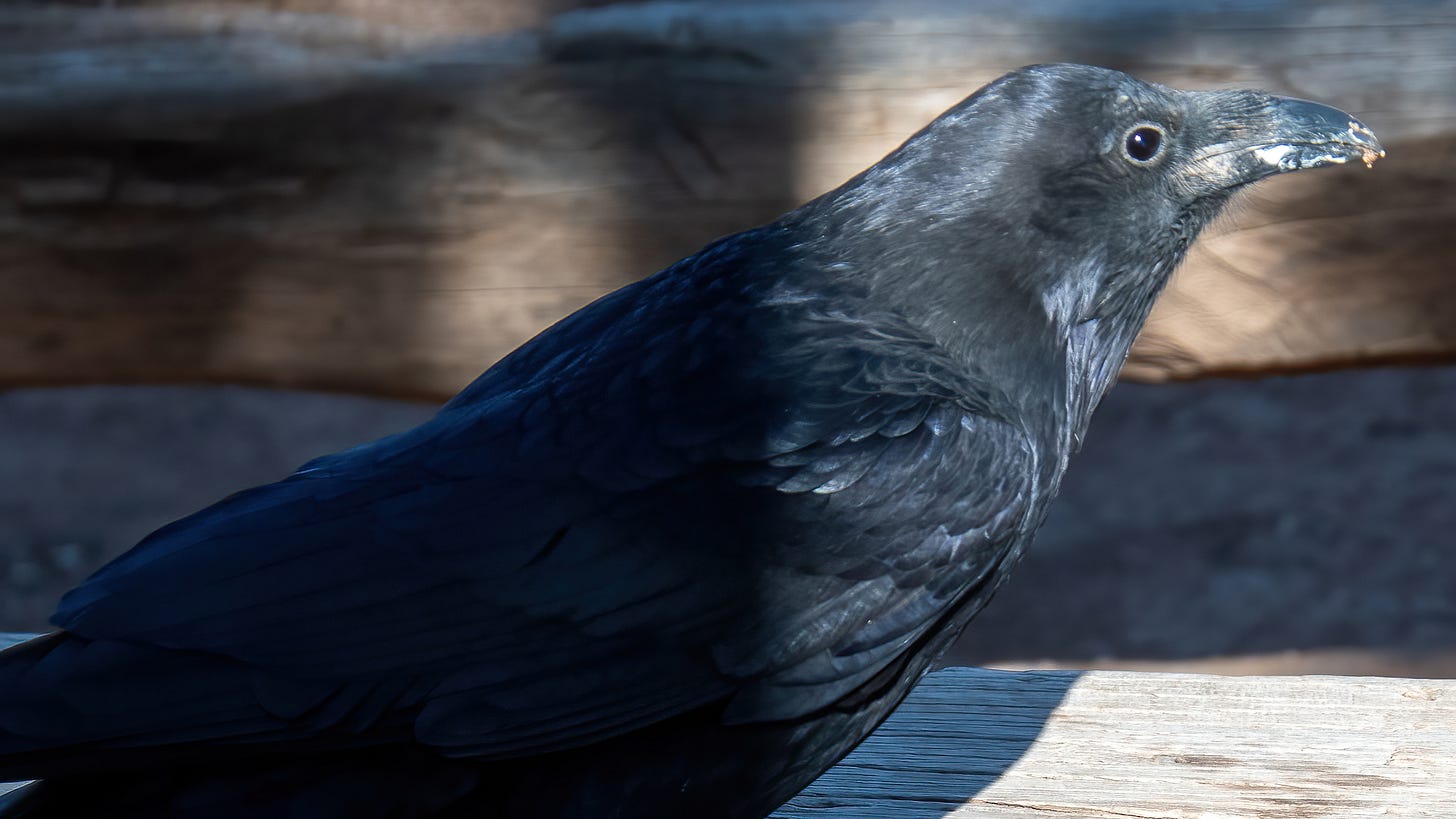
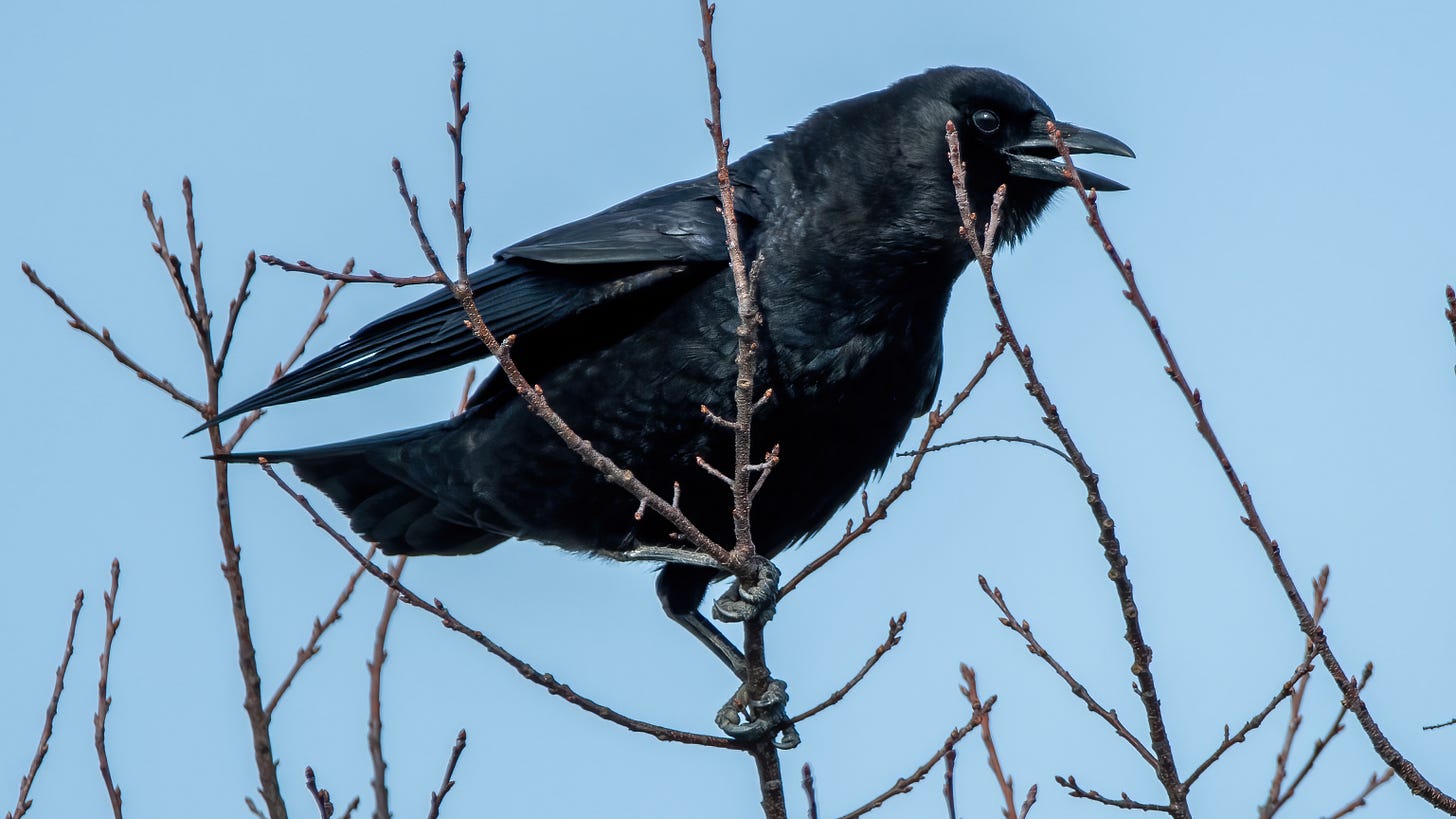
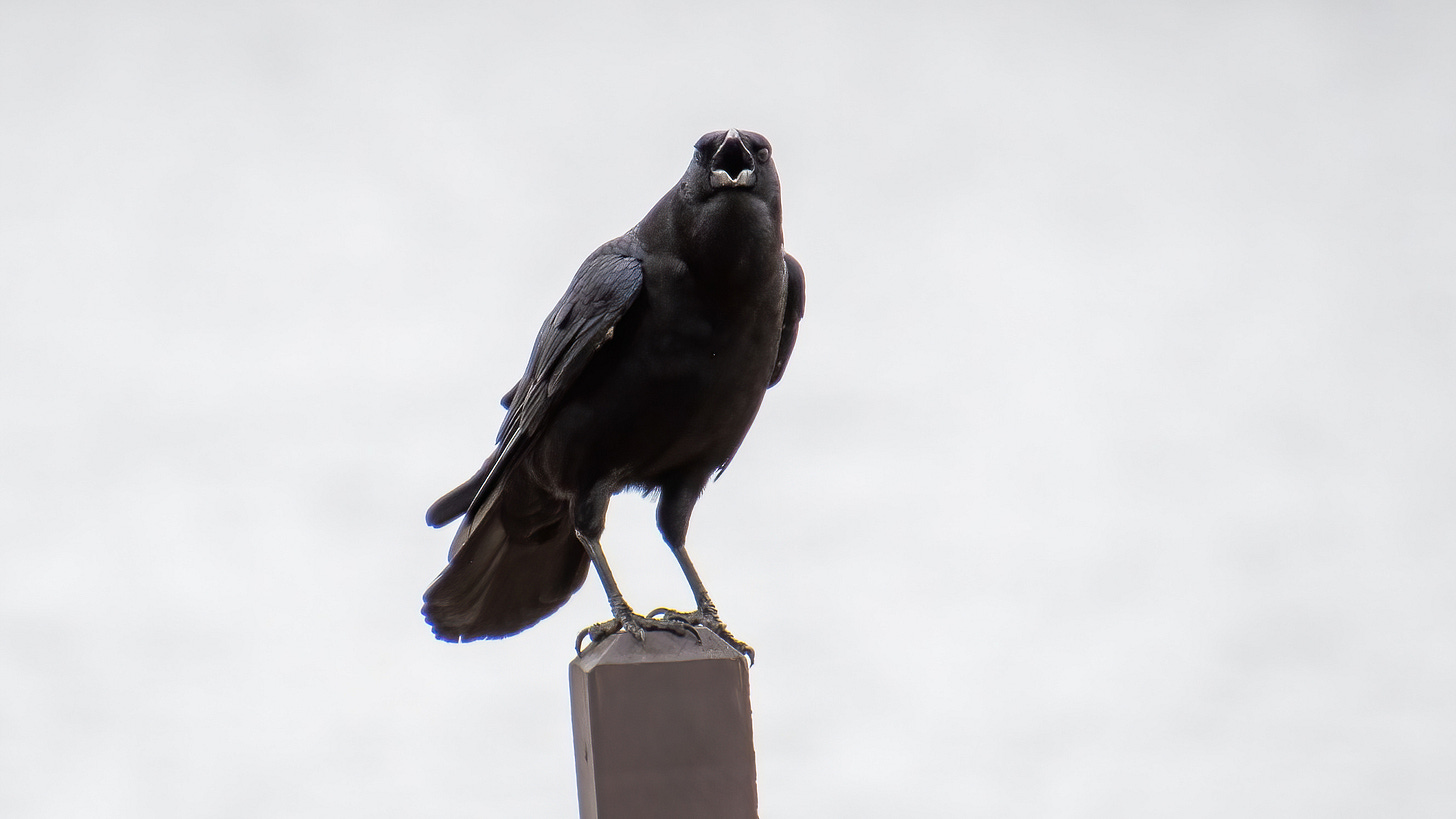



Excellent information, James. I like the descriptions for identifying Common Ravens and American Crows- especially on the tall shape.
One description I read somewhere about how crows fly is like they're almost swimming through the air. Now I cannot unsee that, haha.
Love ravens. Thanks for this great post.